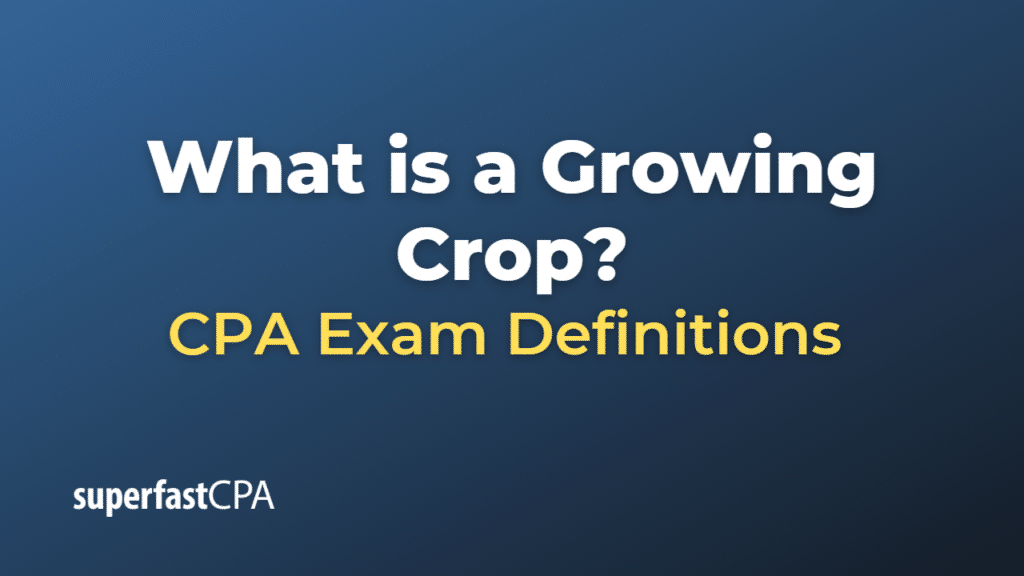Growing Crop
A “growing crop” refers to a crop that is in the process of growing and has not yet been harvested. It includes all stages of growth, from the time of planting until the crop is harvested and sold.
Growing crops are considered a form of inventory for agricultural businesses, such as farms, and are often classified as biological assets under accounting standards. They can include a wide variety of crops, such as grains (like wheat, corn, and rice), fruits and vegetables, and other agricultural produce.
The value of growing crops can fluctuate based on a variety of factors, including:
- Stage of growth: A crop that is closer to harvest is usually worth more than a crop that has just been planted.
- Market prices: The expected selling price of the harvested crop can significantly impact the value of growing crops.
- Weather and disease: Unfavorable weather conditions or diseases can harm crops and reduce their value.
- Production costs: The costs associated with growing the crop, such as labor, irrigation, fertilizers, and pesticides, can also affect the value.
Under certain accounting standards, such as International Financial Reporting Standards (IFRS), growing crops are typically measured at fair value less costs to sell. This means that the reported value is the estimated selling price in the ordinary course of business less the costs necessary to make the sale. It’s important to note that this method can result in significant changes in the reported value from period to period due to changes in market prices and other conditions.
Example of a Growing Crop
Imagine a farmer named John who operates an apple orchard. After planting a new batch of apple trees, he must wait a few years for them to mature and bear fruit. During this period, the trees are considered “growing crops.”
As these apple trees grow, they gradually increase in value. At first, when they’re just saplings, their value is relatively low. But as they grow and get closer to bearing fruit, their value increases. This is because the apples they’ll produce can be sold for profit.
However, several factors can affect the value of these growing crops:
- Market Prices: If the price of apples in the market is high, the value of John’s growing crops will also be high because the expected revenue from selling the apples is high. But if apple prices fall, so does the value of the growing crops.
- Weather Conditions: If a storm or a disease hits the orchard, it could damage the trees and reduce the future harvest, thereby lowering the value of the growing crops.
- Production Costs: The costs that John incurs to care for the apple trees, such as irrigation, pruning, and pest control, also affect the value. If these costs increase, the value of the growing crops decreases, all else being equal.
When John prepares his financial statements, he would record the value of these growing crops on his balance sheet as biological assets. He would estimate their fair value less costs to sell, taking into account the factors mentioned above. This value would likely change from year to year as the trees grow, market conditions change, and production costs fluctuate.













